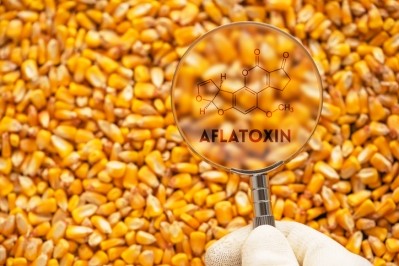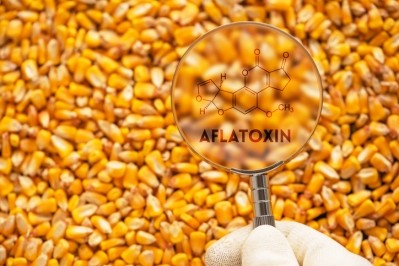Cargill addresses challenges Kenyan feed millers and farmers face

We caught up with Samantha Govender, regional director, Cargill’s animal nutrition business in Sub Sahara Africa (SSA), to hear more.
FeedNavigator: Typically, who attended the workshops? Did the attendees include stand-alone feed millers or was it mainly integrated farming operations?
Samantha Govender: As there are not many integrated farming operations in Kenya, we organized special seminars for both groups. We had a day with the stand alone feed millers, representing small to large mills. The second day was attended by poultry and ruminant farmers, representing small enterprises.
FEN: How professional is the feed industry in Kenya? What raw material supply challenges exist for feed formulators in that market?
SG: Out of approximately 100 feed millers countrywide in Kenya only 20% of these are professional in terms of adhering to the industry standards and making high quality feed; most of these belong to the Association of Kenya Feed Manufacturers (AKAFEMA). The rest of the feed millers generally mix available raw materials and make basic feed manually. In the past, feed milling was produced by small entrepreneurs. However, knowledge acquisition is steadily growing and, as it does, we see this reflected in the higher quality of the feed and management of livestock.

One key challenge faced by feed formulators is the variability in raw materials, this can be seasonal or regionally based. There is a need for local testing facilities to address this problem, and to provide a solution in terms of formulation adaption.
FEN: According to Alltech’s global feed survey, layer feed dominates in Kenya – is there a move on in the country to increase production in other sectors such as broiler, pigs, and dairy, and subsequently feed for those animals?
SG: Yes, layer feed dominates this industry, which is mainly driven by two factors - feed milling technology and formulation knowledge.
Broiler feed, for example, is best when dispensed in pellet form rather than mash and only around 5% of feed millers have the facilities to pellet feed. Also, significant know-how is required to formulate broiler feed. Volumes are growing with the support of multinational companies that are setting up bases in Kenya and assisting the local industry and knowledge-sharing. The small percentage of mills, which provide broiler feed are doing very well, but the rest of the market requires more technical skills in order to formulate good broiler feed and compete in the market. Cargill offers dynamic feed formulation for all species, including broiler. With knowledge of local raw materials, using our NIR facilities, and our internal research of species nutrient requirements, we provides tools to ensure better performance of animals.
FEN: What were the main talking points regarding feed mill safety at the workshops?
SG: In terms of feed mill safety, the key areas we identified were:
- Moving machines such as cranes, forklifts and trucks around the feed mills need to be controlled and monitored more carefully to avoid unnecessary accidents that we commonly see at mills.
- The adoption of Personal Protective Equipment (PPE) is also key to safety. At Cargill, when we visit the mills, we wear our protective gear – for example, reflective jackets, hard hats, gloves, dust masks, and boots - to send a strong message of the importance of PPE to ensure that all staff and visitors leave the premises unharmed. We set an example and ask our partners to embrace the same safety culture.
- Signage to warn workers of potential hazards is also lacking in mills around areas such as exit, handrails, designated walking areas, etc. These safety messages needs to be reinforced daily to become effective.
FEN: In relation to feed milling, what other topics did the Cargill representatives raise?
SG: Other topics at the seminars included:
- The importance of raw material analysis as many of the ingredients used in animal feed are by-products of ingredients such as wheat bran and soybean meal. It is critical to be aware of the raw material nutrient content to accurately match the requirements of production animals.
- Another key topic was mycotoxin control for optimum performance in animals. High levels of mycotoxins can negatively impact the health of animals. This can be controlled by toxin binders in order to significantly reduce the effect on the performance of the animal. This was discussed in-depth, as well as how to control mycotoxins at farm level and in storage. The technical nature of this challenge requires a partner that understands the complexity of mycotoxins and has the technology to test and effectively treat the problem.
- The importance of farm management was raised and covered topics around hygiene, housing, feeding programs, vaccination programs, and disease management in order to produce healthy livestock.
- Another topic of focus was gut health in poultry, specifically how to build the immunity of the birds through feed that is enhanced with natural products.
FEN: What other challenges did the farmers or feed millers mention?
SG: Some of the main challenges raised by farmers and feed millers and that Cargill addressed included:
- Access to reliable lab services - We provide this service to our customers through laboratories in South Africa and in Jordan. Additionally we are in the process of improving the capabilities of our local lab in Kenya to bring the service closer to our customers for quicker turnaround times. We are able to run all the tests that a feed miller needs – such as NIR, wet chemistry testing, mycotoxin levels, and microbiology for disease diagnosis.
- Access to good quality feed – We advise farmers to work with feed millers that have embraced the best practices in feed manufacturing in order to maximize the health of their livestock.
- Diseases at the farm - We discussed how to improve hygiene levels on the farms in order to mitigate diseases.








